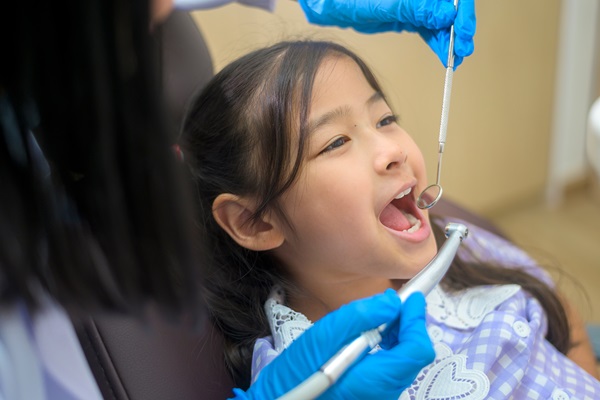Common Pediatric Dentistry Procedures

Dental health affects the overall wellness of the body, making pediatric dentistry a vital part of any child’s general welfare. Some parents may be concerned about dental procedures for children, especially when it comes to comfort levels, the frequency of office visits, and decisions to see if a child has early signs of dental issues. Fortunately, there are plenty of easy ways to ensure that a child’s dental health is up to standards and that they are getting the treatments that they need.
Procedures offered by pediatric dentistry offices
The following are common procedures performed on children in the dentist’s office.
Dental sealants
Maintaining tooth health is a crucial part of pediatric dentistry. For this reason, sealants are frequently used. These plastic coatings are usually applied to the tops of teeth where the food is chewed. They are effective barriers against cavities because they prevent food from settling into the natural grooves of the teeth. Since these sealants can last from five to 10 years, they can be a good investment for a child’s overall tooth health.
Tooth decay treatment
Unfortunately, even the most vigilant of brushers can find themselves dealing with cavities at some point in their life. This is especially true for children, who often do not have the patience needed to brush thoroughly and may not remember to floss every day.
Tooth decay can impact gum tissue, nerves in the tooth, and the tooth itself. Early treatment of cavities can prevent a child from having to go through more severe procedures, like tooth extraction. For example, surface-level cavities can be treated with fillings.
Conversely, deeper cavities may need to be extracted, or a root canal may be necessary. The sooner these problems are caught, the more likely such procedures can be avoided.
Interceptive orthodontic care
A key point of pediatric dentistry is prevention. Early detection of dental problems can keep the child from having to go through potentially serious procedures. Likewise, a dentist can keep track of a child’s orthodontic health. Early orthodontic care involves looking at the bite, identifying crooked or crowded teeth, and taking steps to ensure that adult teeth come in where they should.
X-rays
X-rays are more often required for children than for adults. Their jaws and jawbones develop and change quickly. Tooth structure vulnerabilities, such as demineralization, may not be obvious to the human eye but are visible on an X-ray. Children at increased risk for tooth decay should have regular X-ray exams every six months, as the American Academy of Pediatric Dentistry recommends. A lower frequency of dental X-rays may be appropriate for children with minimal tooth decay risk. Dentists usually employ digital radiography, which emits far less radiation than conventional dental X-rays.
Dental cleaning
The child's dental appointment will begin with a review of their medical history with the dental assistant or hygienist. This will help the dentist and their team know the child's current medical situation so they can discuss any issues that may affect the child's oral health. During a dental cleaning, the dentist will remove plaque and calculus (hard tartar deposits) that may lead to cavities and gum disease from the child's teeth.
After the teeth have been cleaned, a fluoride treatment is performed to fortify and preserve any vulnerable spots from further decay. Visits to the pediatric dentist at least once every six months are recommended by the American Academy of Pediatric Dentistry for optimal dental health and development. However, the dentist may suggest more visits to carefully monitor the child's oral health if they have special requirements or are more prone to dental caries.
Fluoride treatment
Cavities develop when the tooth enamel's mineral makeup weakens. These decalcified areas may be remineralized with fluoride treatment, making them less susceptible to caries. In certain locations, naturally occurring water contains trace amounts of fluoride. Municipal water systems often fluoridate their water to a predetermined concentration. Many commonplace items, including toothpaste, mouthwash, and even certain bottled waters, contain fluoride.
The dentist will assess the child's oral health and fluoride needs individually. There is a delicate balance between too little fluoride and too much. Too much fluoride can cause fluorosis in growing teeth, and not enough might leave the child's teeth vulnerable to decay. Fluorosis can create white spots on permanent teeth in development.
Pediatric dentistry keeps your children's teeth healthy
To keep up with the fast changes in a child’s mouth, frequent visits to the dentist are of crucial importance. Pediatric dentistry can help your child’s smile stay bright, clean, and strong for years to come. Call our office to schedule a visit with a pediatric dentist.
Request an appointment here: https://www.grandparkwaypediatricdental.com or call Grand Parkway Pediatric Dental at (832) 579-0960 for an appointment in our Richmond office.
Check out what others are saying about our dental services on Yelp: Pediatric Dentist in Richmond, TX.
Recent Posts
Visiting a pediatric dentistry office with your child ensures his or her future relationship with oral hygiene and dentists, in general. Whenever your child suffers from oral injuries, consider making an appointment with your pediatric dentist to uncover any underlying problems. For instance, injuries to the tongue and teeth could indicate a deeper jaw or…
Fluoridated water is part of pediatric dentistry. It is a convenient and easy way to strengthen and protect teeth at an early age. Many areas have fluoridated water, which is a definite advantage. If you want to know why a dentist will likely recommend fluoridated water, here are the details.Studies show that almost all sources…
Nutrition is an important part of pediatric dentistry. Having balanced amounts of vitamins and minerals can strengthen and protect the teeth. Proper nutrients also fuel dental function. If you want to know how important nutrition is for your child’s oral health, here are the details from a pediatric dentistry professional.Children are still developing. They need…
Dental crowns are important in pediatric dentistry. Each primary tooth is a living guide for the development of permanent teeth. But baby teeth can also suffer from decay. So restoring these teeth is important for the general health of your child. If you want to know if pediatric dentistry uses dental crowns, here are the…


